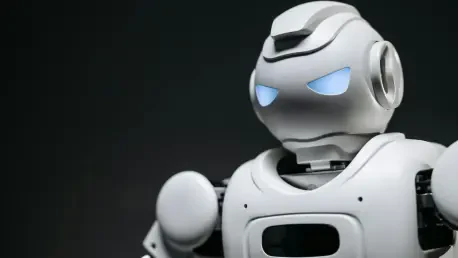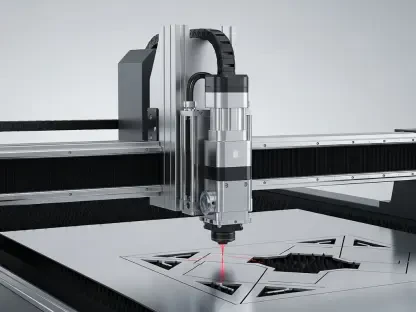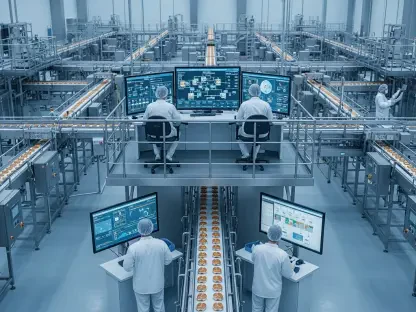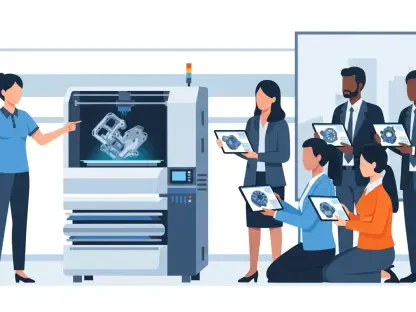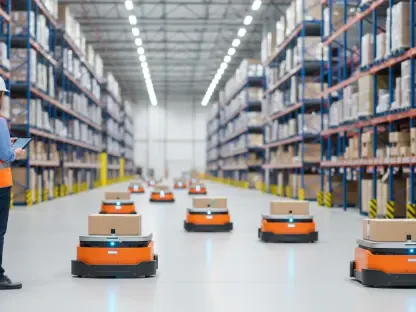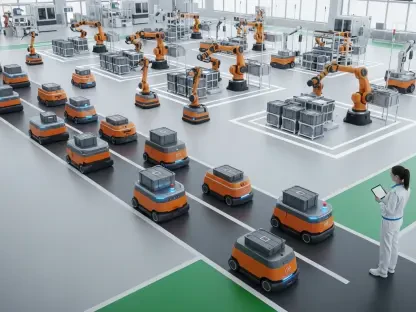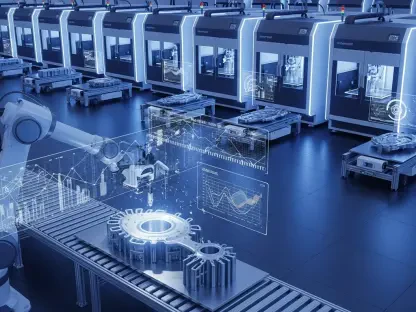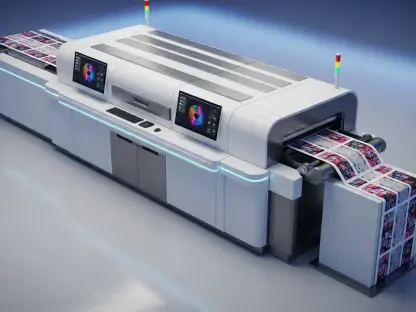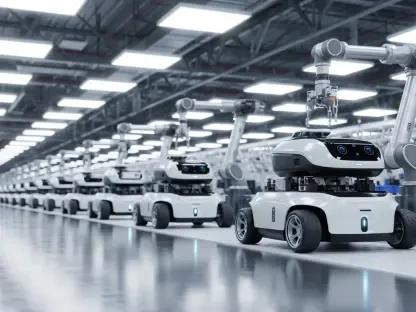I’m thrilled to sit down with Kwame Zaire, a renowned manufacturing expert with a deep passion for electronics, equipment, and production management. With his extensive experience and thought leadership in predictive maintenance, quality, and safety, Kwame offers invaluable insights into the rapidly evolving world of engineering and technology. Today, we’ll dive into the transformative potential of AI in engineering design teams, exploring how it’s reshaping workflows, enhancing quality, and addressing adoption challenges across the industry. From speeding up design reviews to ensuring consistency in standards, Kwame will share his expert perspective on why AI is becoming a game-changer for manufacturing.
How do you see the urgency for design teams to adopt AI in the next couple of years, and what’s driving this push among engineering leaders?
I believe the urgency stems from the intense pressure to innovate faster while maintaining high quality. In manufacturing, especially in sectors like automotive or industrial equipment, the competition is fierce, and timelines are shrinking. AI offers a way to keep up by streamlining processes that used to take weeks into just days or even hours. It’s not just about speed, though—it’s also about staying relevant. Leaders recognize that if they don’t adopt AI now, they risk falling behind competitors who are already leveraging these tools to cut costs and improve outcomes. The data showing 95% of leaders prioritizing AI adoption reflects this reality; it’s almost a survival tactic at this point.
What are some of the standout benefits AI brings to design teams that make it such a critical tool right now?
One of the biggest benefits is efficiency. AI can handle repetitive tasks like checking drawings for errors or inconsistencies, which frees up engineers to focus on creative problem-solving. Another key advantage is accuracy—AI can spot issues that might slip through human review, especially when teams are dealing with tens of thousands of drawings annually. Beyond that, it’s about scalability. AI tools can manage massive workloads without breaking a sweat, something traditional methods struggle with. Ultimately, it’s about empowering teams to deliver better designs faster, which directly impacts a company’s bottom line and reputation.
With AI potentially speeding up design reviews by nearly three times, how do you think this will reshape the daily grind for engineers?
It’s going to be a game-changer for their workflow. Engineers often spend a huge chunk of their day bogged down in tedious review cycles, going over drawings line by line. With AI cutting that time down dramatically, they’ll have more bandwidth to dive into the conceptual and innovative aspects of their projects. It could also reduce burnout—less time on grunt work means more energy for the stuff that really matters. I think we’ll see a shift toward more collaborative and strategic roles for engineers, where they’re iterating on ideas rather than just checking boxes.
What specific repetitive tasks in design reviews do you believe AI can take off engineers’ plates most effectively?
Tasks like verifying dimensions, ensuring compliance with basic standards, and flagging missing annotations are perfect for AI. These are the kinds of things that don’t necessarily require deep engineering judgment but still take up a ton of time. AI can also cross-check drawings against historical data or predefined rules to catch inconsistencies early. In my experience, these repetitive checks are where human error often creeps in due to fatigue or oversight, so automating them not only saves time but also boosts reliability.
Given the massive volume of drawings—sometimes over 50,000 a year—how do you see AI managing this workload compared to traditional approaches?
Traditional methods just can’t keep up with that kind of volume without sacrificing either speed or quality. You’d need huge teams working overtime, and even then, errors slip through. AI, on the other hand, thrives on scale. It can process thousands of drawings in a fraction of the time, consistently applying the same level of scrutiny to each one. It doesn’t get tired or miss details due to workload. In industries like heavy machinery or medical devices, where precision is non-negotiable, this capability is a lifesaver—it ensures nothing falls through the cracks, no matter how big the pile of work is.
Beyond just speeding things up, how can AI enhance the actual quality of design reviews?
AI can dig deeper into details that humans might overlook, especially under tight deadlines. It can analyze designs against a company’s specific standards or past projects to ensure consistency and catch subtle flaws early. It’s also great at identifying patterns—if there’s a recurring issue in designs, AI can flag it and help teams address root causes. This isn’t just about catching mistakes; it’s about building a feedback loop that improves the design process over time. Quality goes up because AI acts as a second set of eyes that never blinks.
Many companies struggle with documenting and using design standards consistently. Why do you think this gap exists, and how can AI help bridge it?
The gap often comes down to human factors—standards get created, but over time, teams change, priorities shift, and documentation gets buried or outdated. I’ve seen cases where new engineers aren’t even aware certain guidelines exist. AI can help by digitizing and centralizing these standards, making them accessible during every review. More importantly, it can automatically check designs against those rules, so there’s no excuse for non-compliance. It also motivates teams to keep standards updated since they know the AI will actually use them, turning a neglected resource into an active tool.
How do you think AI tools can ensure that company standards are applied consistently across all design reviews?
AI tools can be programmed to pull directly from a company’s rulebook—whether it’s a PDF, spreadsheet, or database—and cross-reference every design against those criteria in real time. This eliminates the variability that comes with manual reviews, where different engineers might interpret standards differently. By embedding these checks into the workflow, AI ensures that every drawing, no matter who’s working on it, meets the same benchmarks. It’s like having a tireless auditor built into the system, enforcing consistency without slowing things down.
For larger companies, integrating AI with existing systems can be a hurdle. How do you see this challenge being addressed in the industry?
The key is creating seamless integrations between AI tools and established product lifecycle management systems. Larger companies often have complex setups with tons of data already organized in specific platforms. When AI solutions are built to plug directly into these systems, they can pull data securely without disrupting workflows. This approach minimizes risk and complexity, allowing companies to leverage AI without overhauling their entire infrastructure. It’s about meeting enterprises where they are, rather than forcing them to adapt to the tool.
Smaller companies often worry their data isn’t organized enough for AI to be useful. How can AI solutions help them without requiring a complete data overhaul?
AI can be designed to work with messy or unstructured data right out of the gate. Instead of demanding months of cleanup, some tools can ingest whatever a company has—whether it’s scattered files or outdated formats—and still extract usable insights. For smaller firms, this is huge because they often lack the resources for big data projects. AI can even help organize that data over time by suggesting structures or flagging gaps as it processes designs. It’s a practical way to get started without feeling overwhelmed by preparation.
Change management is a significant barrier for some teams adopting AI. What strategies can companies use to build trust in these tools among engineers?
Building trust starts with transparency—companies need to show engineers exactly how AI works and what it’s doing. Training sessions where teams can see AI catch errors or save time in real scenarios help demystify the tech. It’s also critical to position AI as a partner, not a replacement. Leadership should emphasize that AI handles the mundane stuff so engineers can focus on high-value work. Involving engineers early in the adoption process, maybe even letting them pilot tools, can turn skepticism into ownership. Trust grows when people see the benefits firsthand.
There’s often a fear that AI might replace engineers. How do you address this concern while highlighting its supportive role?
The fear is understandable, but AI isn’t here to take jobs—it’s here to take over the grunt work. In my view, engineering is about creativity and judgment, things AI can’t replicate. Tools like these are built to handle repetitive checks and data crunching, so engineers can spend more time solving complex problems and innovating. I’ve seen firsthand how AI can make teams more effective, not obsolete. It’s about augmentation—giving engineers superpowers, not sidelining them. The key is communication; we need to keep reinforcing that human expertise drives the process, with AI as the assist.
Looking ahead, what is your forecast for the role of AI in engineering design over the next few years?
I think AI will become a standard part of the engineering toolkit, much like CAD software is today. In the next few years, we’ll see it move beyond just reviews to deeper integration—think predictive design suggestions or real-time optimization during the creation phase. Adoption will likely accelerate as tools become more user-friendly and tailored to specific industries. The challenge will be keeping up with the pace of innovation while ensuring data security and ethical use. But overall, I’m optimistic—AI has the potential to redefine what’s possible in design, making teams more agile and products more reliable than ever before.
